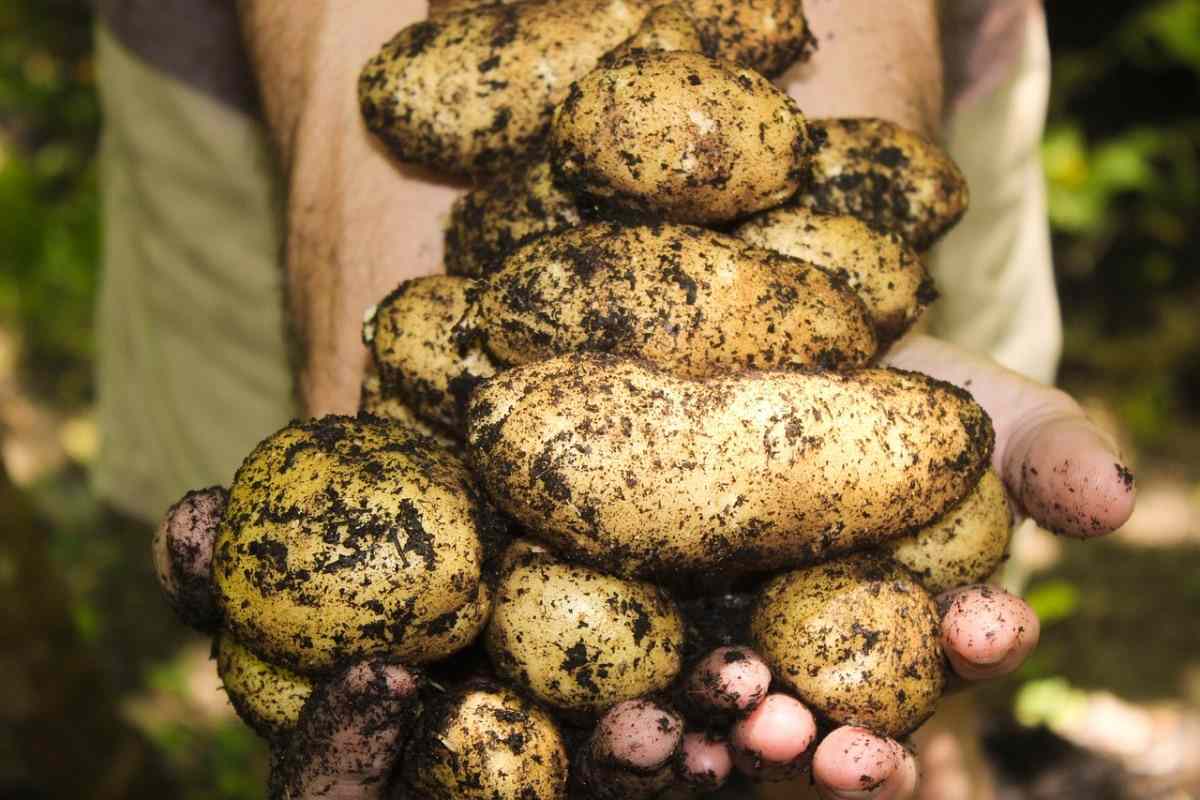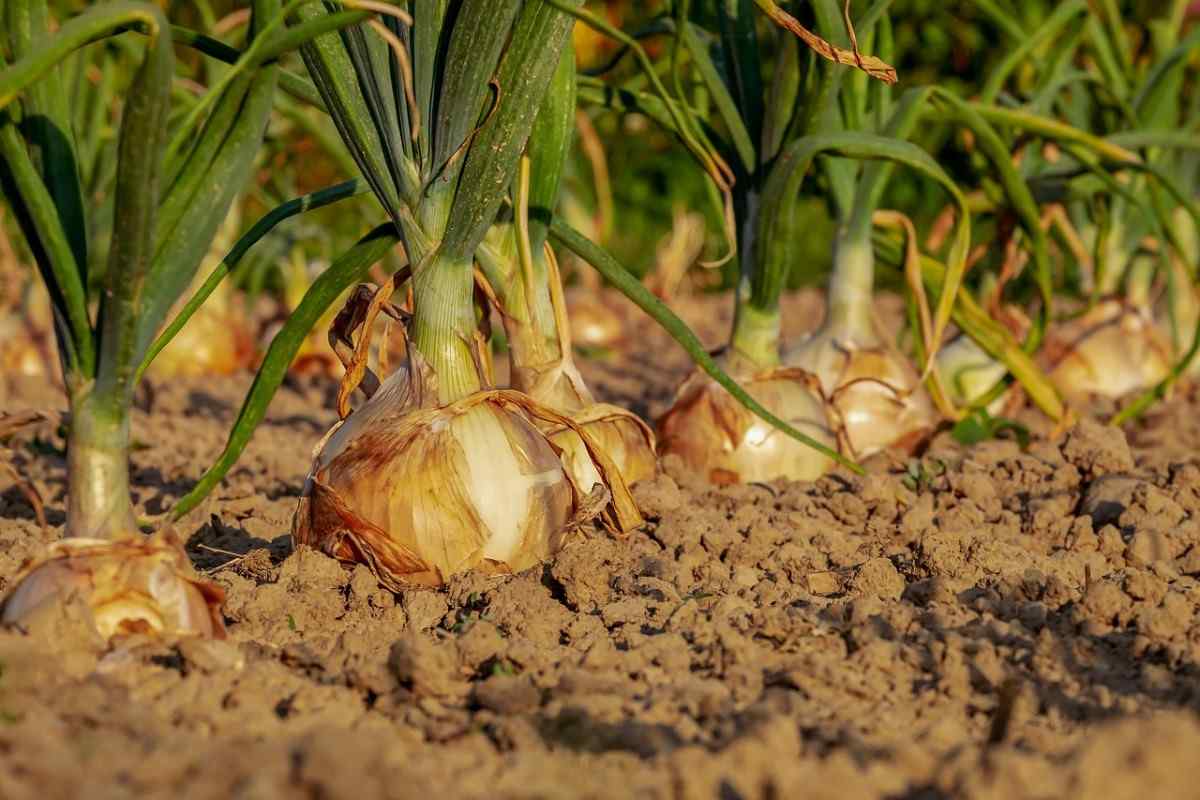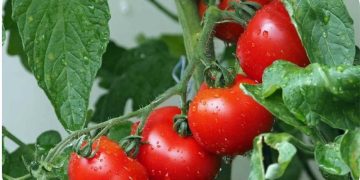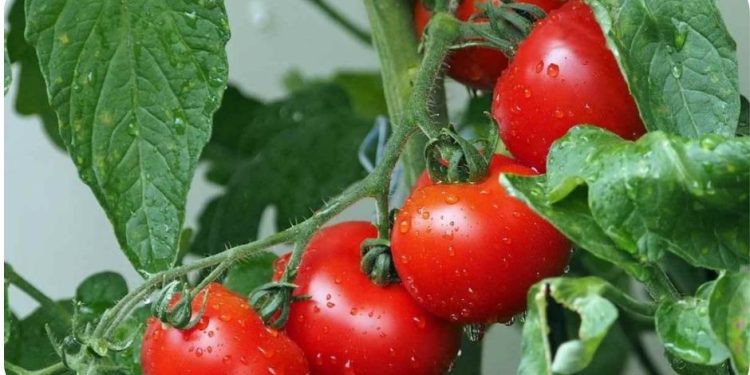Introduction to Vegetable Farming in Australia: The Australian vegetable farming sector is an important source of food. All vegetables are an important part of healthy eating and provide a source of many nutrients and fiber. The distribution of agricultural production in Australia is largely determined by the physical environment and climate conditions.
In Australia, vegetable production is one of the most important horticultural industries. The horticulture industry plays important role in Australia, especially as a provider of employment opportunities and in regional development. Though, the relatively smaller and less sophisticated domestic market creates fewer opportunities for producers to be profitable in Australia. This has been aggravated by increasing fresh and processed vegetable imports to Australia. This not only influences producers in the Australian vegetable industry but also consumers through safety issues.
A Guide for Vegetable Farming in Australia and Planting Seasons in Australia
Soil Health for Vegetable Farming in Australia: In Australia, vegetables are cultivated on a wide range of soil types, so it is important to understand the characteristics and constraints of each of these soils only then can we get the best from the soil for vegetable crop production. Understanding soil type and how to manage it will help you maintain long-term soil health and minimize soil loss and degradation.
Generally, the productivity of Australian soils is largely determined by the moisture supply. On only about 10% of the continent is natural rainfall sufficient, or excessive, for plant growth for 9 to 12 months of the year. Mineral soils exist over much of arid Australia that contains virtually no organic content and have developed little depth, and they can consist merely of a rough mantle of weathered rock.
Australia has ancient soils that are low in organic matter and nutrients, and are susceptible to erosion. A changing climate condition, the increasing pressure to produce more food and fiber, and increasing population pressures, pose major challenges for the successful management of our fragile soils.
Major Vegetable Crops in Australia
Vegetable crop choices will vary depending on climate, Australia’s weather is generally mild enough to plant something at any time of the year. In Australia, vegetable growers produce a wide range of crops on a commercial scale. Over 90% of all fresh vegetables sold in Australian supermarkets are grown in Australia, with the few imports covering vegetables with production windows that are restricted to small growing seasons such as asparagus and garlic.
Most valuable vegetable crops in Australia also reflect an overall higher price per tonne, rather than a value supported by the weight of production, such as mushrooms, leafy salad vegetables, and broccoli/baby broccoli.
Tomato
In Australia, Tomatoes are grown in almost all states. However, the majority of the Tomato production occurs mainly in Victoria and Queensland. In traditional times, Tomatoes produced outdoors. Tomatoes are being produced in high-tech glasshouses in recent years. The most popular tomato variety to cultivate in Australia is the Gross Lisse Tomato.
The tomato industry in Australia can be separated mainly into two distinct sectors, those grown for use in processed foods and those grown for the fresh market. Victoria is the major producer for the processed market accounting for about 86% of total production followed by New South Wales at 12% and small amounts in the other states. Tomato plants requiring staking must be planted at least 1 meter apart. Bush-type tomatoes must be planted 50 cm apart.
Carrot
Most of the carrot varieties grown in Australia belong to one of the below four variety groups distinguished by shape although some new varieties, such as Mojo are the result of combining characteristics from several variety groups by conventional plant breeding. Summer carrot crops can be ready for harvest in about 16 weeks from sowing, while crops growing through the cooler winter months can grow for up to 24 weeks. Carrots are machine-harvested and then transported a short distance to the packing shed. The four major Carrot variety groups represented in Australia are;
1. Nantes Carrot varieties with blunt-ended straight to slightly tapered roots. Nantes varieties are generally sweet-flavored because of low terpenoid contents. Root length averages about 200 mm. Example varieties are Stefano and Navarre.
2. Imperator Carrot varieties such as Red Hot and Cellobunch produce pointed roots up to 350 mm long with medium width shoulders and taper. Several Carrot varieties grown in Australia such as Condor and Red Brigade are intermediate in shape between Imperator and Autumn King Varieties. Still, other varieties such as Red Count and Red Sabre are intermediate in shape between Imperator and Nantes.
3. Autumn King Carrot Varieties which have wide-shouldered highly tapered pointed roots averaging 300 mm in length. Then, the main representative of this group grown in Australia is Western Red. Majestic Red Carrot is a related variety with some Chantenay characteristics.
4. Chantenay varieties such as Royal Chantenay are wide-shouldered and also highly tapered with good internal color.
Potato
In case if you miss this: Pruning In Agriculture, Benefits, Tips, and Ideas.

Today the potato industry can rightly claim to be the 4th-largest food crop internationally, accounting for 20% of all vegetable production in Australia. Different varieties of potatoes are grown in Australia are Kennebec, Sebago, Bintje, Pontiac, Coliban, Patrone, Red rascal, and Desiree.
Onions
Onions prefer to grow in a sunny, open position with well-drained soil. The Australian onion industry continually works to develop its competitiveness, and environmental sustainability is a top priority. Onions are cultivated in most states of Australia, but the majority of Onion production occurs in South Australia and Tasmania. The Onion growing regions in Australia are the Adelaide Plains in South Australia, Northern Tasmania, and the Lockyer Valley in Queensland. The main variety of onions grown in Australia is the traditional brown onion, which accounts for 79% of a fresh production.

Broccoli
Broccoli crop requires regular watering to facilitate their fast growth rate and encourage compact heads to form. Ideally water daily or every second day. Traditionally cooler climates from Melbourne and below were favorable but these days it can be grown anywhere year-round. Ensure a well-drained soil, chock full of well-rotted compost and organic matter with a pH level of 6.5-7.
Lettuce
Some Lettuce varieties range in sizes, shapes, colors, and flavors however crisp head, romaine, butter head, and loose-leaf are the most popular in Australia. The lettuce plant grows best at relatively cool temperatures and does not like extreme heat or cold. Usually, loose-leaf varieties prefer warmer weather and heading lettuces do best in cool weather. Most heading Lettuce varieties will bolt to seed in the warmer months.
Capsicum
Capsicums are grown throughout Australia in frost-free, tropical, and subtropical regions. Warm conditions over a five-month growing period are necessary for high crop yields and good quality fruit. The majority of Capsicum production occurs in areas of Queensland, South Australia, and Victoria. It is a valuable crop with excellent prospects both for the domestic and export market. Capsicums are also known as bell peppers, are grown in almost all states of Australia due to their popularity. Though, the majority of the production occurs in the outdoors of Queensland.
Vegetables to Grow in Western Australia
Vegetable production occurs throughout Western Australia, allowing a wide range of crops to be grown. Major vegetable crops in Western Australia include Carrots, Potatoes, Capsicums, Onions, Tomatoes, and Broccoli. A wide range of vegetables is commercially cultivated in Western Australia. Other vegetable crops include Pumpkin, Sweet Corn, Zucchini, Asparagus, Beans, Snow Peas, Cabbage, Asian Vegetables, Cucumbers, English Spinach, Sweet Potato, Spring Onions, Leeks, Broccoli, Swedes, Turnips, Beetroot, and Brussels sprouts. Many other vegetables are also grown on a smaller scale. The large geographic range of production environments allows many vegetables to be grown year-round in Australia. Irrigation is used to ensure that vegetable crops are supplied with adequate water to produce high-quality vegetables.
Conditions for Vegetable Farming in Australia
- Vegetable plants have some basic requirements like food, water, light, and heat. Different vegetable plants require varying amounts of requirements. When it comes to light, vegetables need about 6 hours of direct or partial sunlight a day.
- Climatic factors affect all stages and processes of vegetable plant growth. Temperature level requirements are based on the minimum, optimum, and maximum temperatures during both day and night throughout plant growth.
- Most vegetables like 6-8 hours of sun a day, but large-leafed plants such as silver beet, lettuce, and some herbs are plants that will cope with a shadier spot. Some vegetable plants are slow-growing or take up a lot of space, so they’re less practical to grow in a small space unless you can find a dwarf variety. Instead, focus on the vegetable plants that take up less space, are easier to grow, and that you can turn over quickly.
- Add organics to your soil – Most vegetable plants will grow well in well-drained soil. A soil rich in organic matter like compost or manure will promote good healthy growth, improving the yield of your crops.
- Feed regularly – Regular application of fertilizer is essential for crop yield. The type, rate, and time of application will depend mainly on the particular crop to be grown and the soil type. A good fertilizer applied during the growing season will ensure vigorous and healthy growth in vegetables.
- Water consistently and mulch – Most vegetable crops require consistent watering or plants could suffer reduced yields and quality. Most vegetable crops stop growing if soil temperatures get too high. Though, good quality mulch will keep the soil cooler, resulting in active root growth. Also, the application of a soil wetter, especially during drier conditions, will ensure that the vegetable plants get all the water they need.
- Prevent and treat pests and diseases quickly – Keeping good farming practices (good soil conditions, fertilizing, and watering) will result in strong vigorously growing vegetable plants that are better able to resist attack and outgrow the damage. Be familiar with the normal healthy appearance of your vegetable plants so that when there is a problem you will be able to tackle it quickly and hence prevent excessive damage to your crops.
Seasonal Vegetable Farming in Australia
Australian farmers continue to adjust their operations and adopt new techniques to respond to the opportunities and challenges of agricultural production in Australia including, increased competition from imported fresh and processed produce, market price pressures, or adverse seasonal conditions. In the temperate regions of Australia, vegetables are traditionally eaten seasonally mainly in regional areas, although in urban areas there is large scale importation of fresh produce sourced from around the world by supermarkets and wholesalers for grocery stores, to meet vegetable demands year-round.
Generally, nursery production occurs close to the capital cities. Queensland vegetables supply the southern states during the cooler June to October period.
During spring – The main vegetables during the spring season are Artichoke, Asparagus, Bean Shoots, Beetroot, Broccoli, Cabbage, Cauliflower, Cucumber, Leek, Lettuce, Mushrooms, Peas, Rhubarb, and Spinach.
During summer – The main vegetables during the summer season are Capsicum, Cucumber, Eggplant, Squash, Tomato, and Zucchini.
During autumn – Autumn is a great month for planting vegetables, as temperatures drop and the harsh summer sun recedes. Autumn is an ideal time to grow all sorts of vegetables. Although the weather can be cooling down, the soil is still warmed up from the summer months and rain showers are beginning to pick up across the country.
Vegetables to plant in autumn include Peas, Spinach, Spring Onion, Turnip, Beetroot, Cabbage, Carrots, Lettuce, Radishes, Onion, Parsnips, Celery, Cauliflower, Broccoli, Cucumber, Tomatoes, Zucchini, Peppers, Chilies, Eggplant, Potato, Sweet Potatoes, Pumpkin, Squash, Okra, and Sow Beans.
During winter – Some winter vegetable plants that will grow well in drier parts of Australia and the outback include Broad beans, Broccoli, Brussels sprouts, Cauliflower, Lettuce, Peas, Spinach, Tomatoes, Beetroot, Cabbage, Carrots, Leeks, Onions, Potatoes, Silverbeet, and Turnip.
Vegetable Planting Season in Australia
| Vegetables | Planting season |
| Artichokes | Spring |
| Asparagus | Spring, Summer, Autumn |
| Beans | Summer, Autumn |
| Beansprouts | Spring, Summer, Autumn, Winter |
| Beetroot | Spring, Summer, Autumn |
| Broccoli | Spring, Summer, Autumn, Winter |
| Cabbage | Spring, Summer, Autumn |
| Capsicum | Summer |
| Carrots | Summer, Autumn, Winter |
| Cauliflower | Spring, Summer, Autumn, Winter |
| Celery | Summer |
| Chillies | Summer |
| Cucumbers | Summer, Autumn |
| Eggplant | Summer, Autumn |
| Leeks | Spring, Summer |
| Lettuce | Summer, Autumn |
| Mushrooms | Spring, Summer, Autumn, Winter |
| Peas | Spring |
| Potatoes | Autumn, Winter |
| Pumpkins | Summer, Autumn |
| Silverbeet | Spring, Winter |
| Spinach | Spring, Summer, Winter |
| Tomatoes | Summer, Autumn |
| Turnips | Summer, Autumn |
| Zucchini | Summer, Autumn |
Water Management for Vegetable Farming in Australia
Water is a main key preoccupation of management on Australian vegetable farms. The Australian Bureau of Agricultural and Resource Economics (ABARE) surveys reveal that irrigation is used on 90% of vegetable farms. There was little change between the 2 surveys. All crops rely heavily on irrigation water, with at least 77% of growers using irrigation for all vegetable plants.
Generally, irrigation comes from two main sources, river systems, and underground aquifers. Major river systems used for irrigation in Australia are the Murray-Darling system, the Ord River in the Kimberley region of Western Australia, and many rivers along the east coast of Australia.
Water is a necessary input to sustainable vegetable production. Though, groundwater bores are the sole source of irrigation water in the Northern Territory and are the dominant source in Western Australia and South Australia. Vegetable growers throughout Australia face a challenging operating environment under the different water reforms. The vast majority of vegetable plants produced in Australia are sold on the domestic market, and therefore prices are highly sensitive to increases in production. Also, large investment and increased farm size are often required for irrigation systems used in vegetable production (i.e., drip), and specialized skills are required to drive those systems to achieve optimal product quality.
Winter Vegetables to Grow in Different Regions in Australia
There are many winter vegetable options available for each unique region of our country.
Tropical regions
Areas such as Northern Queensland and the Northern Territory experienced tropical climate conditions. Vegetables that can be grown in tropical regions during the winter include;
Carrots – Carrots come in different variety of colors and can be a fun and rewarding veggie to grow in winter.
Onions – Onions are wonderful for adding to warm winter dishes and soups. Onions can be grown during the winter season in tropical regions of Australia.
Subtropical regions
This includes regions like Brisbane and South-East Queensland, along with the Northern NSW region. Vegetable plants to grow in the winter if you live in these spots include;
Lettuce –Lettuce grows in subtropical regions of Australia during the winter season.
Broccoli – Wonderful for adding to soups or stir-fries, broccoli is a great vegetable to add to your winter.
Inland and dry regions
For the inland areas of Australia, plus those that have a dry climate condition, the following vegetables can be good to grow in winter;
Cabbage – It can be a great vegetable to grow during the wintertime in inland and dry regions.
Silverbeet – Silverbeet is another good winter vegetable to grow.
Potatoes – There are few vegetables as universal as the potato and it is the most important food crop in the world.
Tablelands and cold regions
If you live in one of the cooler regions of Australia, such as the highlands, some vegetables to plant in winter include;
Cauliflower – Cauliflower is a wonderful winter veggie to add to your collection. Grow one or a whole patch and enjoy freshly picked cauliflower this winter season.
Leeks – Leeks are hardy and are perfect for those new to growing their veggies.
Coastal regions
Coastal regions include areas such as Sydney and regions of the East Coast. Vegetables that can be grown in temperate areas during the winter months include Potatoes, Tomatoes, Peas, Lettuce, Broccoli, Bok Choy, and Cabbage.
You may also check this: Dairy Farming In Kenya.
Best Season to Plant Vegetable Seeds in Australia
Summer
In the summer season, it is best to plant seeds that will thrive on long and hot summer days. Consider planting Tomatoes, Zucchini, and Capsicum by the middle of summer to get the best growth throughout the season.
Autumn
Autumn can be one of the most beneficial seasons of the year to plant vegetable seeds in Australia. The best vegetables in autumn include Celery, Cauliflower, Broccoli, and Broad Beans.
Winter
Winter can sometimes be tricky, especially if temperatures get below freezing, as this can damage your produce. Winter vegetable seeds include Artichoke, Carrots, Lettuce, Onions, and Radishes.
Spring
Vegetables can grow well when planted in spring. Once the vegetable seeds are in the ground, here are some good tips on how much you should water your produce.
Supplementary Analysis, Training, and Opportunities for Vegetable Farming in Australia
The Australian vegetable farming industry faces a range of important challenges in the face of import competition, market fragmentation, and tight margins. The vegetable industry includes many farm businesses that are geographically dispersed, people from a range of ethnic and cultural backgrounds, and supply a variety of products to meet domestic and export consumer demand.
The Australian Bureau of Agricultural and Resource Economics and Sciences (ABARES) Australian vegetable-growing farms survey includes a set of supplementary questions that allow detailed analysis of a range of issues. These contain the vegetable-growing cost of production; markets and value-adding; irrigation and production management; training and business management; R&D (research and development); and opportunities and intentions.
More than one-half of vegetable growers used field days as a source of education and training about farming, while around one-fifth attended conferences, workshops, or short courses. And, a majority of vegetable growers used information and communications technology to obtain meteorological information (54%), to manage their financial affairs (51%), and to obtain market information (50%). Around one-third of vegetable growers perceived climate suitability, a lack of knowledge with growing particular crops and marketing those products, or water availability as constraints to change their current cropping mix.
Vegetable farming businesses have identified a diverse range of priorities for research and development. The main priority is vegetable pest and disease management with 78% of farms in Australia considering this area a high or high priority for further research and development. High priorities were accorded to farm productivity and the development of higher-yielding varieties, which attracted high or very high responses from almost 70% of farms.
In Australia, environmental sustainability, and marketing, and market development, also attracted significant support with more than half of vegetable businesses recognizing these areas as priorities, while consumer research, and chilling and storage technology, were ranked lower in the order of research and development priorities.
Computers are now used widely throughout the agricultural sector with more than 80% of vegetable businesses using them for a wide and diverse range of applications in running their businesses. Among the first uses for computers in farming was to gather weather condition information and to aid and sharpen financial management and, these are the two most widely-used applications in the sector. Two-thirds of vegetable businesses in Australia use computers for weather information and about 64% for managing their financial affairs.
Almost 40% of vegetable businesses in Australia also use computers as a means of maintaining and developing links within the farming industry and for obtaining market information. Other uses of computers include accessing educational resources and purchasing farm inputs. Then, the scale of computer use among vegetable growers is above the national average in Tasmania, Victoria, and Western Australia, with use in New South Wales the lowest of the individual states. Large vegetable businesses in Australia are more likely to use computers than small vegetable growers with 97% of growers on farms larger than 70 hectares using a computer compared to 80% of growers with less than 5 hectares. However, it is interesting that the use of computers by the smallest category of farms exceeds the next category with only 72% of farms in the 5 to 20-hectare bracket using computers. The use of global positioning systems (GPS) during crop production is strongly influenced by farm size. Almost 50% of the largest farms use GPS systems compared to 14% of farms of 5 to 20 hectares.
Growth Opportunities for Vegetable Farming in Australia
The popular growth opportunities for Australia’s vegetable growers are the production of high-quality vegetables and selling directly to retailers, favored by 57% and 40% of growers respectively. Over a quarter of growers in Australia identify the cultivation of niche products as a means of expansion and this is particularly popular in Western Australia and Tasmania where 43% and 49% of growers consider niche products a growth opportunity. Just under a quarter of growers see growth opportunities through value-adding on the farm.
Exports are identified as a growth opportunity by 19% of vegetable businesses in Australia, but this proportion reaches 37% in Victoria. Exporting is considered too hard of time-consuming by over 60% of Australian vegetable growers, while 45% consider that prices are not high enough. Other impediments are shipping costs and inadequate farm infrastructure. Less popular opportunities for vegetable growers to expand their businesses include selling directly to foodservice operators, identified by about 14% of growers nationally, under protective cropping (11%), and hydroponics (6%).































